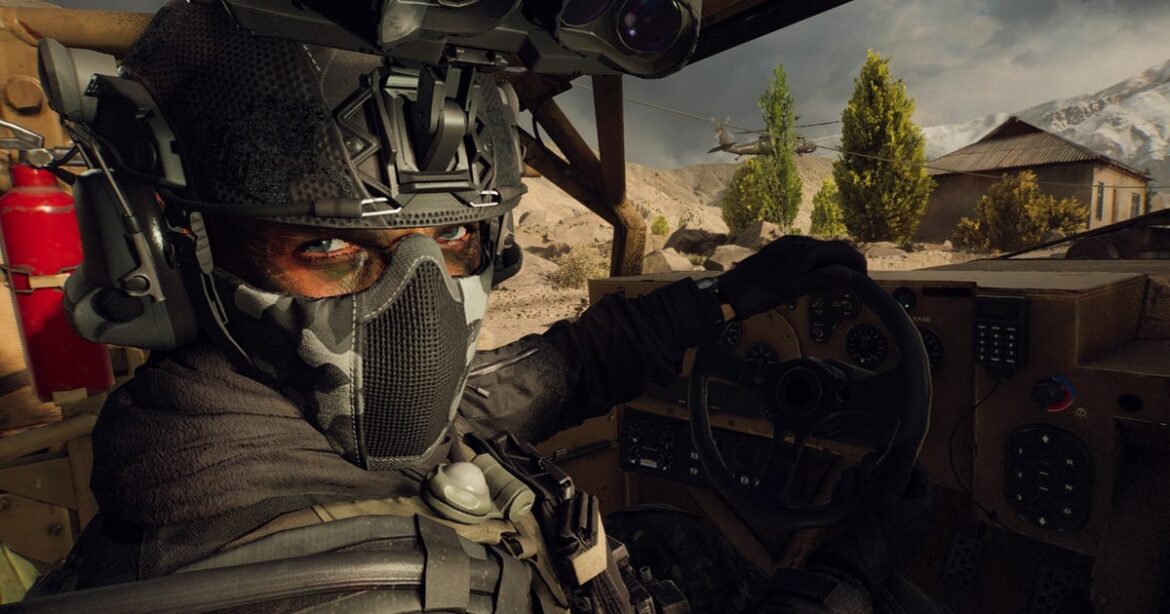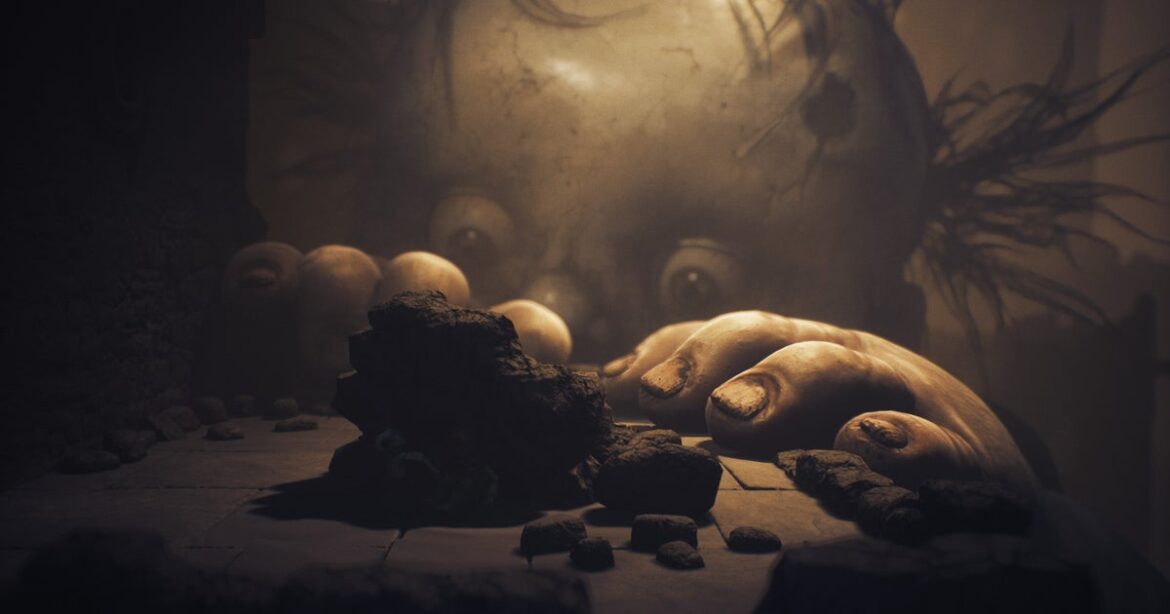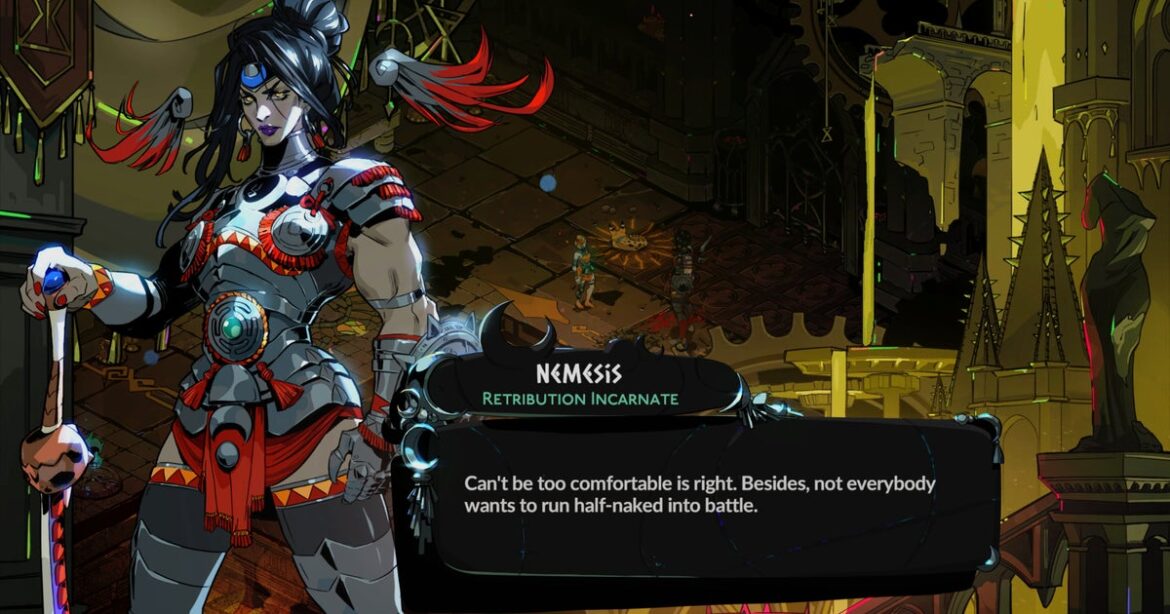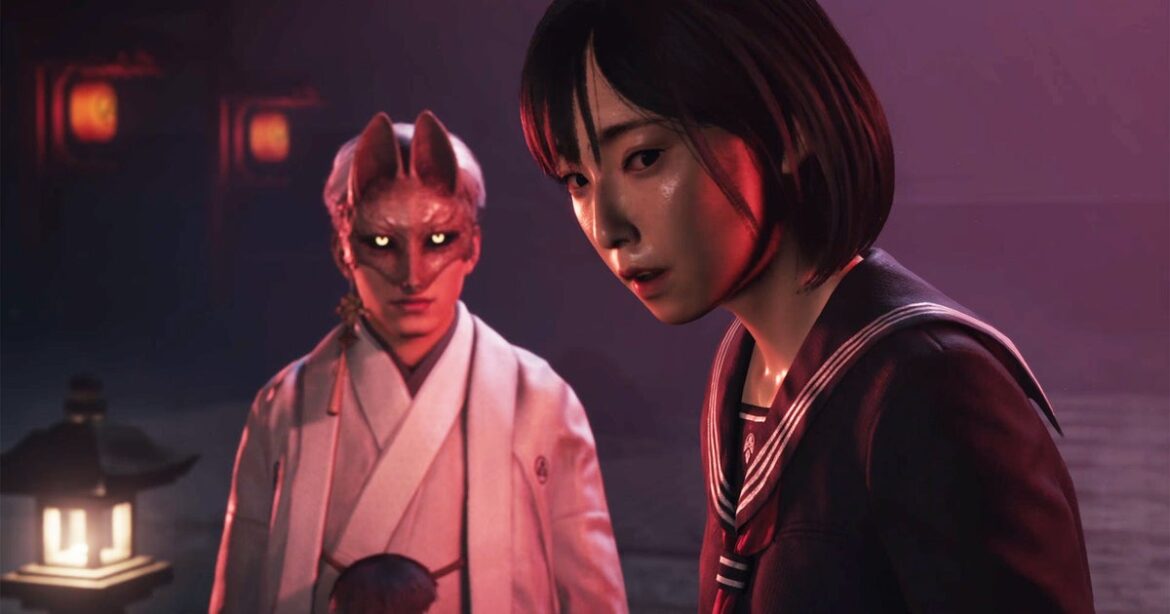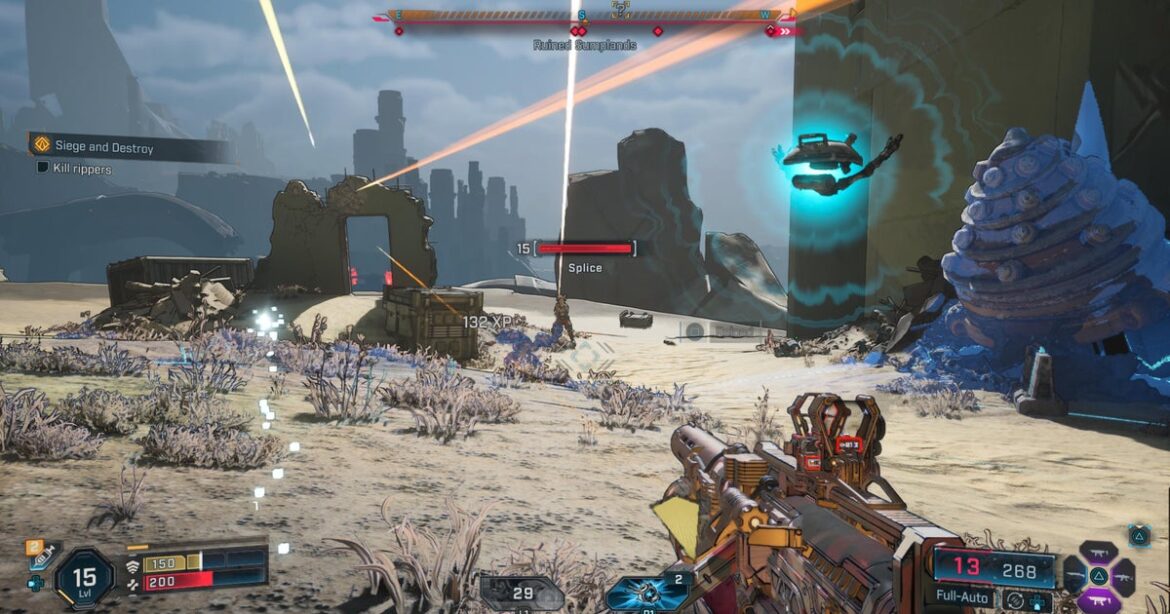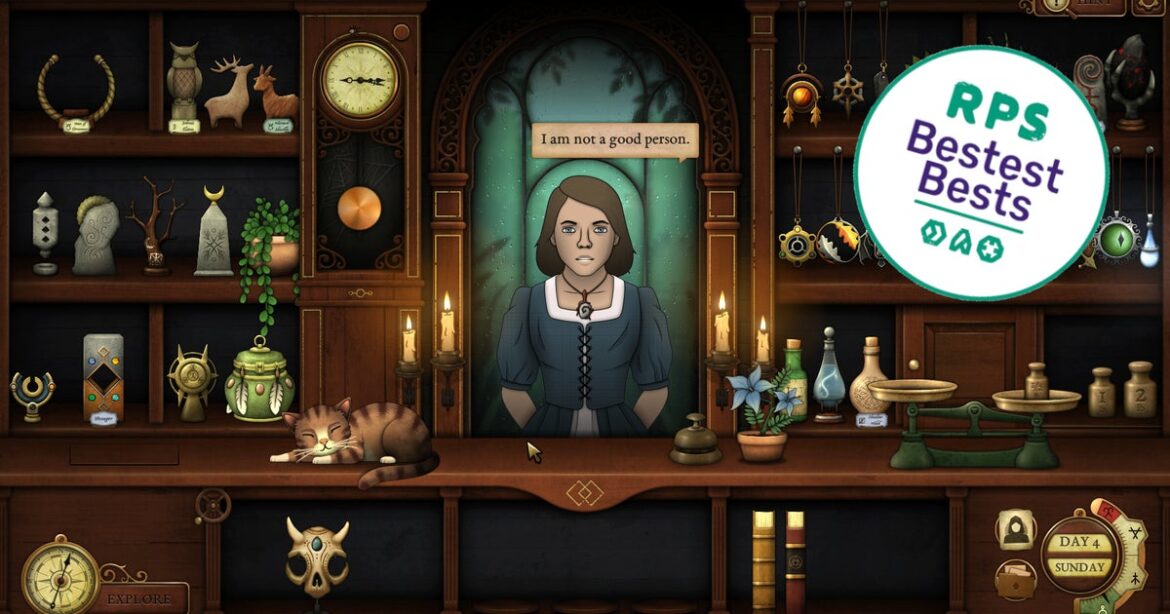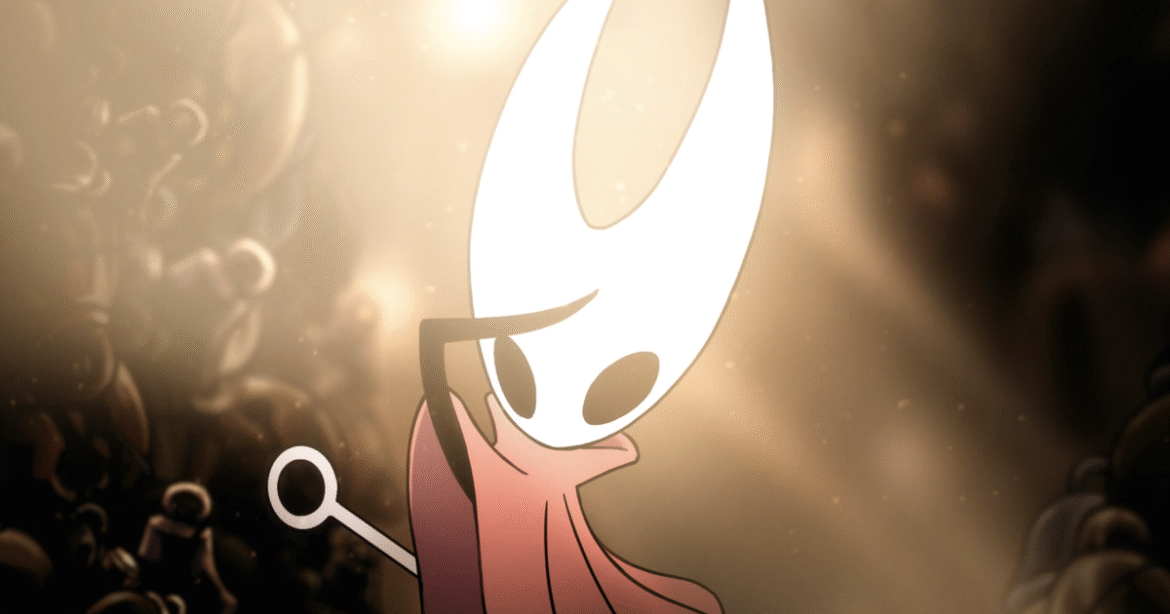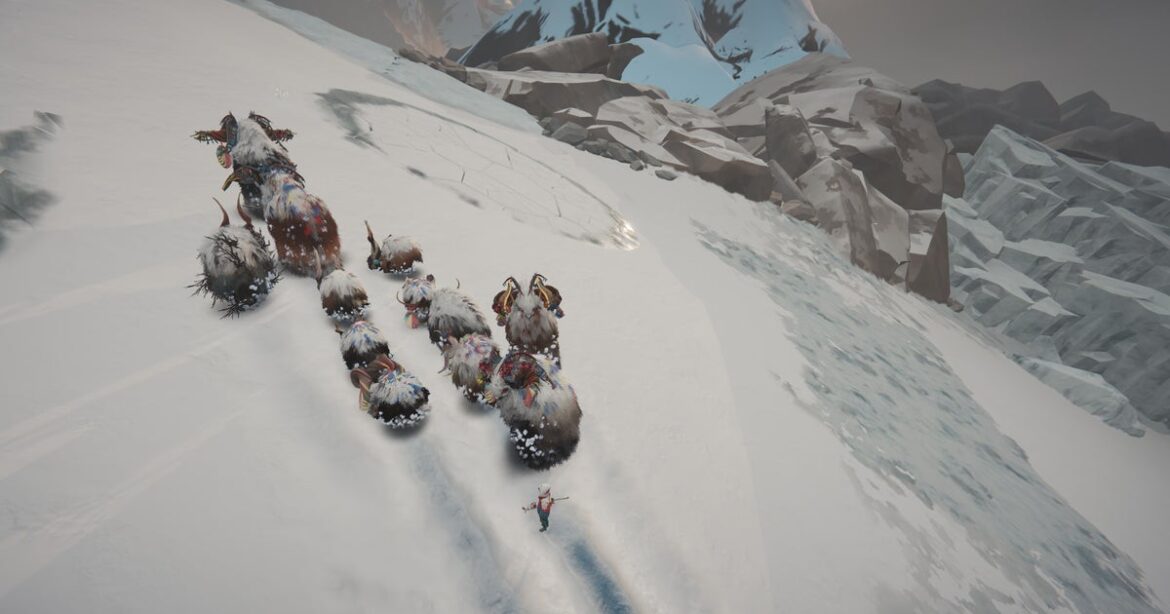Battlefield 6 review
The new Battlefield is a tale as old as the FPS genre: a vapid military fable salvaged from total irrelevance by a robust albeit unsurprising multiplayer.
- Developer: Battlefield Studios
- Publisher: EA
- Release: October 10th 2025
- On: Windows
- From: Steam, Epic Games Store, Microsoft Store
- Price: $70/£60/€70
- Reviewed on: Intel Core-i7 12700F, 16GB RAM, Nvidia RTX 3060, Windows 11
All hail the Battlefools! They fan out efficiently from spawn and are instantly massacred in a hail of rifle fire and grenades. Arguments erupt in the chat. Who’s watching the flanks? Were you watching the flanks? I’m not supposed to watch flanks, I’m an engineer – my two defining passions are blowing tanks up and fixing them, a clash of loyalties that routinely gets me run over. You’re a recon – shouldn’t you be reconnoitring? Blame gives way to frantic improvisation as the attackers turn defender. People switch classes, get cut down, switch classes again. Support players plant lines of barricades that somehow avail them nothing against the snipers. Squad leaders ping the objective icon furiously, like babies banging the arms of their prams. One squad tries crawling behind a line of parked cars and is promptly squished by hammer-wielding exterminators.
Then, it happens. A single friendly player gets the better of somebody holding a corner. That player hoots and hollers into the enemy base and scurries under a table like a naughty kitten. Somebody else spawns on the naughty kitten, skips down the hall and wastes three more with a shotgun. Viewed from the spawning lobby, the two infiltrators are flecks of blue hope upon the sullen red box of the objective. The swarm reacts. Bodies move or teleport into the breach. The other side grudgingly gives way.
This is Battlefield 6, a big team combined-arms shooter in which visibility is king and death comes from all angles, elevations and distances. A woozy cacophony in which you live for those moments when the gods of Brownian motion smile, and you somehow become part of a greater whole that has focus and direction. A return to the smoky azure-tangerine stylings and class setups of Battlefields 3 to 4, after the abortive hero-shootiness of Battlefield 2042. A comfortably furnished, very loud, basically unsurprising multiplayer sequel, encumbered by what could be the worst singleplayer FPS campaign I’ve ever sat through – an aggressively bland piece of war porn that fails to hurdle even the low bar set by previous Battlefields. We’ll circle back to the campaign. First, we have to take Bravo.
Image credit: EA / Rock Paper Shotgun
Battlefield 6’s maps are places of meticulously petrified realism where the fires of history never gutter out. Each is an emblem of forever war with an undead soundtrack of baked-in artillery blasts and a generous, but noticeably selective budget of buildings that can be degraded or destroyed for tactical advantage.
Operation Firestorm – restored from Battlefield 3 – is a great, gleaming oilfield. Picture the workers in overalls and hard hats among the pipes, tapping dials and checking their clipboards. Picture the stooped elders walking between the red-capped houses of Tajikistan’s mountainsides, where you still find patterned carpets thrown over compound walls, and the remains of what could be walnut tree groves. In Gibraltar’s Old Town, you lurk behind ornamental fountains and sun-worn shutters, aiming at the heads among the hanging flower baskets. All these shows of location research come second, however, to the letters marking the map objectives. Glorious letters of tomb-grey or obstinate red, which need to be invaded and painted blue.
In Battlefield’s flagship Conquest mode, each objective is a map within the map that drains the other side’s respawn flags when you control enough of them. The objectives develop their own personalities as each match goes on. Here’s Alpha, the haven that never falls: opulent and imperial, gazing proudly from its stoic perch above the Brooklyn pier. There’s Bravo, the cosmopolitan heart of the war, switching sides at a reassuring, almost-seasonal cadence – a roomy marketplace of constant yet somehow judicious murder. There’s Charlie, the lost: a sunken abscess of recon diehards and anti-personnel mines. “We don’t go to Charlie anymore,” grizzled commanders ominously explain to the recruits joining mid-round. And then, of course, Delta, that filthy rat. That flip-flopping appeaser, trembling between loyalties with a half-full capture wheel, never quite conquered, never quite out of reach. “Pick a fucking colour, Delta,” both sides roar, as they charge into each other’s bullets.
Image credit: EA / Rock Paper Shotgun
Sometimes the letters are strewn all over, and we call this Conquest or Domination – the freest of the modes, where an awful player can often make a contribution (and earn some XP) by walking away from the more obvious explosions and locking down an objective everybody’s forgotten about. Sometimes they form a corridor, creating more desperate attrition across a palpable frontline, and we call this Rush or Breakthrough. Escalation is the new kid on the blockbuster: it’s Conquest, but when you capture enough objectives, the lethal twilight zone that surrounds every Battlefield mission area pulls closer. It’s an attempt to blend Battlefield with Fortnite, offering matches that segue from baggy tank and plane skirmishes into shellshocked close quarter mayhem. I think it works well enough, though I think the average round of Conquest offers much the same interplay of scales already, and less rigidly.
And then there are the garden variety FPS modes – deathmatch, team deathmatch, king of the hill. Battlefield 6 does a fair job of them, but they remain Call of Duty’s turf. Certain classes, like the slow-shooting, vehicle-painting recon troops, simply make less sense in these cramped and spiralling, figure-of-eight engagements, however much you tinker with loadouts. In general, it’s always intriguing to follow Battlefield’s attempts to grab some of the “it’s 5.30pm and I fancy a cheeky killstreak” audience, while clinging onto its identity as a game for people who put sustained teamwork ahead of personal gratification. This extends to the limber, but not too agile movement, which (depending on the heft of your equipment) offers just enough leeway to Keanu Reeves your way out of an ambush by means of spasmodic ducking and sliding.
Image credit: EA / Rock Paper Shotgun
The same existential struggle to be, and not to be COD is found in the classes and loadouts. Battlefield 2042’s Operator customisation is gone, and the four broad class archetypes from previous Battlefields are back. The key thing to know about the classes is that they are all bastards. The engineer is that bastard firing the MG turret on the tank coming up the road. You score a very palpable hit on the tank with your launcher, and the engineer slinks out like a spider and fixes it with a magic blowtorch, while the tank driver puts an armour-piercing shell through your ear.
The recon is that bastard somewhere above you who won’t let you stand or run in a straight line. You head to the rooftop to even the odds, and the recon spies you climbing the ladder through an inch-wide gap and swats you back down into rubble. You try some mindgames, doubling back behind cover to throw the sniper off, but the fucker appears to be psychic – either that, or you’re being discreetly monitored through a drone or deployable camera. The support is that bastard behind the self-deployed barricade who just resurrected four guys with her electric paddles, and is currently power-washing your position with mounted LMG fire. The assault is that bastard who just came through the window care of a creatively deployed sloping ladder. You shoot her three times but only in the legs, and she pirouettes irritably and murders you where you lie.
If you’re a returning Battlefield pervert, you may sneer at me for this display of my evident skill deficit. Bad news, General Patton – EA want 100 million people to play this, according to reports, which means you have to let the dirty casuals in. You have to make room in your elite tactical snuffbox for the folks with two left hands who react to the fall of a pin by bouncing a frag off the wall they’re hiding behind and galloping out into the sights of a helicopter.
Image credit: EA / Rock Paper Shotgun
Let me digress into guide writer territory and offer some advice to the greenhorns. My top tip is to unlock the weapon stocks that lessen recoil, as soon as you can. Also, stop trying to shoot people and focus on playing the objective and using your gadgets. If you’re an engineer, chuck down mines at every junction. If you’re support, get used to playing rearguard and laying on your lightning hands. Even if you’re not a support, prioritise reviving people – in Battlefield 6, you can drag KO’d players into cover before stabbing them with your adrenaline pen, and in a shooter where lives are currency, this can be more impactful than taking the point yourself.
It varies by the mode, but all nonlethal actions earn XP and ensure you have toys to pick from when you decide it’s time to give those bunny-hopping streamers a run for their subscriber money. It’s hard to judge off the back of around six hours in EA-organised pre-launch multiplayer sessions, but I think Battlefield 6’s progression and customisation strike a decent balance between the omni-tinkering of COD and the vegetables-before-pudding, know-your-role strictness of the older Battlefields. There are closed playlists that lock classes to certain guns, and open playlists that let you equip weapons to classes they are statistically less capable with. Each class also has a choice of skill paths that let you skew the emphasis slightly – making the support more offensively-inclined, for example, or the recon even harder to see.
The sole saving grace of the campaign – yes, I guess we should finally talk about the campaign – is that it’s an introduction to some of the boomsticks and boondoggles you’ll use in multiplayer. Every individual fight against scripted waves is bookended by crates of replacement weapons, gleaming in the dust of butchered houses like boxes of eggs freshly laid by some kind of Lockheed Martin chocobo. I estimate that at least 30% of my deaths came about while I was in the grip of choice paralysis – urgh, this laser-pointed SMG seems ideal for the tunnels ahead, but that scoped jobbie with the bipod isn’t without its charms. Mind you, it’s also true that I lingered too long over the guns because I had no interest in advancing the story, and no interest in killing the soldiers trying to kill me.
Image credit: EA / Rock Paper Shotgun
To announce that a blockbuster military shooter has a terrible story mode is like saying that water is wet. Next you will tell me that it has a jump button! Next you will tell me that EA’s new owners in Saudi Arabia have a complicated relationship with the press! Fair enough, but I think Battlefield 6’s campaign is uniquely bad, and not just because it’s another fan letter to the US military with a couple of canned Thoughtful Moments. It’s bad because the concept is tedious, the characters have no character, the pacing is non-existent, and the writing is unbearable.
All hail the Battlefools! They fan efficiently out of their base in near-future Georgia, right into a hail of bullets and shells, and in a terrible stroke of misfortune, do not die immediately. The perpetrators this time are Pax Armata, a paramilitary group backed by a formless coalition of ex-NATO countries, who exclusively employ people in balaclavas save for one lairy Scottish badnik whose motivation never really evolves beyond being miffed that he was left behind in some other war. We know Pax Armata are the baddies because the 60-second prologue full of mashed-together TV broadcasts tells us they are, and that’s all the groundwork you’re getting, bucko, now please kill 100 Paxmen during the scripted jeep getaway.
This kind of disdain for dramatic build-up characterises Battlefield 6 throughout. Beyond the opening bash with Pax Armata, you’re whisked off to the house of a CIA agent who is being held hostage by some of the main soldier people. The gunfolk have questions about missions the spook sent them on, which supplies a basis for flashbacks that bounce you between operations. Somebody says “You don’t understand, intercepting that shipment of Cadbury’s Creme Eggs overrode all other priorities.” And then somebody bellows “THAT’S NOT WHAT YOU SAID IN SOUTHEND-ON-SEA,” so off we fuck back to Southend-on-Sea to drone-strike a million ice cream van drivers with terrorist sympathies.
Image credit: EA / Rock Paper Shotgun
For clarity, Battlefield 6 doesn’t have a mission set in Southend-on-Sea – I am trying to avoid spoilers. But it wouldn’t be any the worse for it. The changes of scenery have no meaning because the premise and structure are so childish and brittle. They could set the campaign inside an IKEA store and it would be exactly as exotic, and probably more surprising. I’ll take the Gruen effect over this game’s torn-up, restitched playbook of two-note stealth, innumerable last stands and tank missions that feel like kiss-chase with Dodgems. I’ll definitely take it over saving the President yet again.
The story might get away with more if the writing and tone weren’t so smug. The thundering soundtrack has this inexplicable air of gloating bad-assedness that had me reaching out to give somebody, anybody a wedgie. The dialogue is half “INCOMING” and half smirk. “I don’t know what’s more impressive, the view or the firepower,” somebody announces on a clifftop, and alas, there is no option to immediately kick him into the sea, scream gibberish at his corpse and throw an exploding barrel after him for good measure. “Oh for fuck’s sake, Murph – you going to make us look like heroes?” somebody else yells, causing me to shoot him in the face for 30 seconds in the hope of persuading the game to register friendly fire.
The story theoretically deals in war trauma, but none of the cast are as psychologically twisty as they sometimes propose to be. There’s a character called Hemlock who is Battlefield 6’s equivalent for Modern Warfare’s mystery-man Ghost. He’s regarded as “crazy” by squadmates, because he says stuff like “this sure beats training”. At one point, a comrade loses his cool and shoots wildly at a dead sniper. It’s a brief, awkward effort at demonstrating that your otherwise Terminator-esque squad have souls, but then you’re handed some kind of robot firework and ordered to play whack-a-mole with the tanks up the road.
Image credit: EA / Rock Paper Shotgun
Battlefield 6 sporadically queries its own taste for violence, but here as in many Call of Duties, these bursts of apologia have no real impact on the business of popping skulls like bubblewrap, and just feel like insulting disclaimers. One of the Gibraltar missions takes you through an underground WW2 museum, and gosh, the Strangelovely irony of blasting your way through a memorial to the last time the island was at war. “Seems like it never ends for these people,” somebody mourns later, as you rock the local villages with quadrotor bombs and C4.
Pissed-Off Scottish Badman dutifully ladles out a few moments of who’s-the-real-villain-here convolution towards the finish – a critique of the game’s oorah patriotism that is basically akin to dusting a tank with pistol fire. “Don’t you want to die for something real?” he asks, declining to share specifics. The greater failure is the overall characterisation of Pax Armata, who are literally described in-game as an omnipurposeful grab-bag of all the mercenary nutters and zealots who hate the United States and the NATO world order – a framing that usefully saves the developers from dealing with specific malcontents, and exploring their grievances.
You can set your watch to the script’s cliches. “Storm’s passed,” somebody says, and I had to fight the urge to unplug the PC before somebody else could say, “No, it’s just a break. The worse is still to come”. Helpfully, this turned out to be the end of the campaign. I’m partial to cliffhangers, but this one does feel rather abrupt. Battlefield 6’s singleplayer has reportedly been a troubled project, and it doesn’t seem impossible that what we’re playing is the scorched stump of a more expansive story. Assuming the numbers add up for now-private EA, Battlefield 6 is definitely getting a narrative sequel, or at least some story DLC.
Image credit: EA / Rock Paper Shotgun
Battlefield 6’s campaign makes the most sense when you uninstall it, boot up the online again, and realise that the ensemble flashback story is essentially a very tedious argument over which multiplayer map to load up next. Multiplayer has always been the point here; the singleplayer is just a means of getting certain people through the door. That door swings both ways, however. Battlefield 2042 got it in the neck from some players for not having a singleplayer mode, but Battlefield 6 is evidence that often a singleplayer story is the worst thing you can inflict on a game that just wants to be a massive round of paintball.
The game’s online sandbox spaces have an eerie vitality in their mangling together of realism and colour-coded objective design. I am perennially fascinated by how the swarm thinks in Battlefield online, how that little pebble tumbling through a gap in the fortifications becomes an avalanche. Add a narrative component, however, and you create expectations of meaningful context, consequence and even introspection that the creators of military shooters are seldom able to fulfil.

